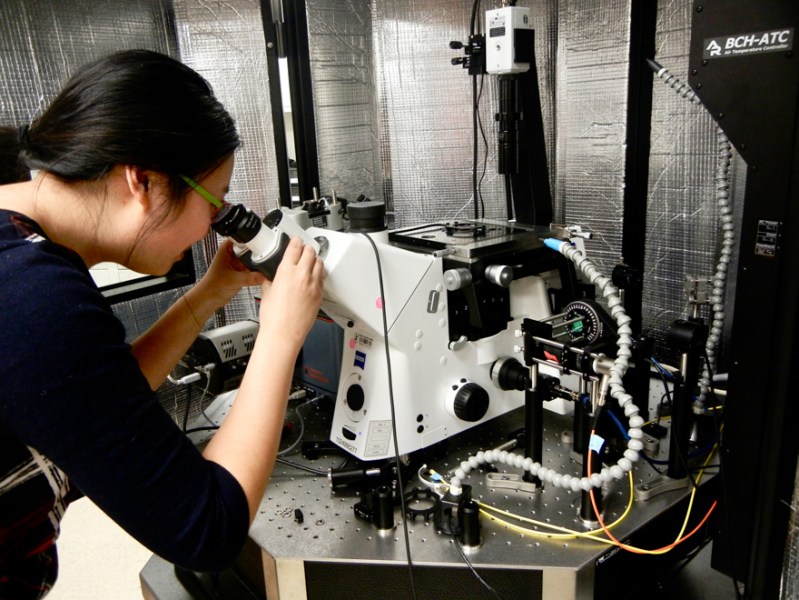Stanford researchers are collaborating to create nanoparticles that emit light in response to a force stimulus. They hope to use these nanoparticles as sensors to study the miniscule, previously ignored forces governing many biological processes. Currently, they are testing these sensors in the digestive systems of millimeter-long worms called nematodes.
Alice Lay, a fourth-year Ph.D. candidate in applied physics in the Dionne Group, leads the project. Collaborating with her are associate professor in materials science and engineering Jennifer Dionne and professor of molecular and cellular physiology Miriam Goodman.
Their new sensors, when illuminated with near infrared light, emit visible light of a certain color and intensity depending on the forces being applied to them. These sensors are translating force into a color response, which can be collected and recorded with conventional cameras or microscopes.
“A lot of the time… instruments that are used to measure forces are very large [and] aren’t compatible for biospecimens,” Lay said. “Only recently have people been looking into scaling down the tools … If you combine advances in imaging and you have sensors that produce a stable optical response, it’s a lot easier to measure forces between and within cells.”
The first step to testing out these new tools in vivo is to look at digestion in nematodes.
“Digestion is one of the most primitive processes to visualize,” Dionne said. “Food is chewed, then swallowed, then further broken down before waste is excreted. Relatively strong forces are thought to be exerted by organs and cells at each step, so we should see a pretty vivid color change.”
Nematodes’ transparent bodies also allow the light emitted by the sensors to be easily recorded by a camera or microscope.
This collaboration between Lay, Dionne and Goodman came out of a meeting of the Stanford Neurosciences Institute. The organization brings together researchers from many different communities, including engineering, medicine, psychology and law, in order to better understand mental health and behavior. During one of the meetings, Goodman presented some of her work with nematodes while Lay presented on her lab’s work in nanotechnology.
“Miriam basically said, if you’re interested in understanding how neurons work, there are electrical signals to probe … but there are also mechanical forces which play a very important role,” Dionne said. “And Miriam pointed out that there aren’t many bio-compatible force sensors.”
Right now, the group’s sensors detect forces in the nanonewton to micronewton range, good for relatively large force processes such as digestion. But they hope also to develop nanoparticles that are sensitive in the piconewton to nanonewton phase, so as to study subcellular forces, such as the mechanical forces between neurons.
“I see this project as opening a door to a new way of thinking about how animals and tissues work,” Goodman said. “A lot of research in biology has focused on understanding chemical signals. … but there are also mechanical signals: forces that affect cells and tissues all over the body … and we really don’t know much about that at all.”
Contact Aulden Foltz at afoltz ‘at’ stanford.edu.
